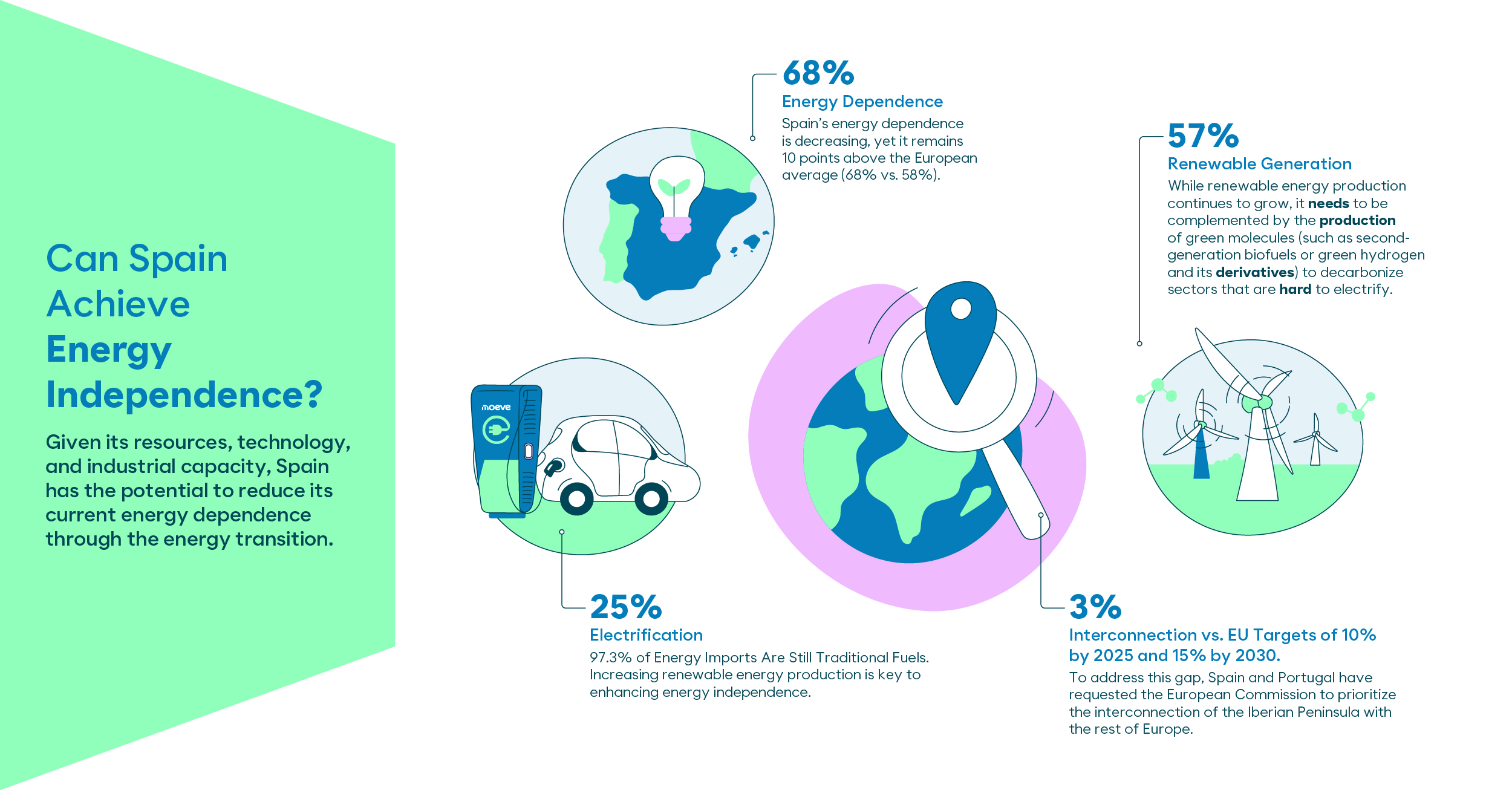Tuesday, August 5, 2025
In 2023, Spain recorded an energy dependency rate of 68%. This means that more than two thirds of the energy we consume depends on other countries. In an increasingly uncertain international climate, this external dependence poses a strategic vulnerability for the country.
The good news is that Spain has renewable resources, technology, and the industrial capacity to reduce this situation, allowing much of the domestic demand to be met with local renewable energy. This transition will strengthen our resilience against volatility in global markets and geopolitical tensions, driving a reduction in emissions while promoting sustainable economic growth. Some data to better understand the current context:
- In 2023, Spain recorded an energy dependency rate of 68% (net energy imports divided by gross domestic energy consumption, expressed as a percentage), a slightly lower figure than the 70% in 2022 but higher than the European average of 58%, reflecting a positive but insufficient trend, according to the Spain Energy Balance for 2021 and 2022 by MITECO.
- According to data from Red Eléctrica, although renewable energy accounts for 57% of electricity production, its contribution to total primary energy consumption is less than 20%. This highlights the poor electrification in key sectors such as industry and transportation.
- Spain's interconnection level in relation to its installed power is around 2.8%, well below the European targets (10% by 2025 and 15% by 2030). To address this, Spain and Portugal have requested that the European Commission prioritize the interconnection of the Peninsula with the rest of Europe.
- Only a quarter of the final energy consumed in Spain is electric. In order to move towards a more efficient and sustainable model, it is crucial to electrify as much of the energy demand with renewable energy as possible (the PNIEC sets a target of 35% by 2030), and to promote the development of sustainable solutions based on green molecules, such as green hydrogen or 2G biofuels, for sectors that are highly complicated to electrify, such as aviation, maritime transport, heavy road transport, and industry.
One of the challenges of energy dependence is price volatility. A need to import fossil fuels exposes Spain to fluctuations in the international market. This instability increases the cost of energy, creates economic uncertainty, and decreases the competitiveness of companies and consumers.

What opportunities would an increase in our independence bring?
The various opportunities for increasing energy independence in Spain include the following:
- Energy security and stability: reducing dependence on imported fuels decreases exposure to price volatility and supply crises, improving energy security and allowing companies to plan for the long term.
- Economic and energy sovereignty: Spain allocates more than 4.6 billion euros per month to importing energy products, with a deficit of €2.8 billion in the energy balance, according to MITECO. Developing our own energy sources and renewable energy would allow us to retain wealth, reduce the deficit and strengthen national autonomy.
- Economic growth: the development of the renewable energy industry and new clean technologies could generate 700,000 jobs in Spain, and increase the GDP by 15% in the Iberian Peninsula. More than 180,000 new jobs are expected to be created by 2040 in areas related to green molecules such as hydrogen and biofuels, according to a report by Moeve and Manpower.
¿Te ha parecido interesante?





